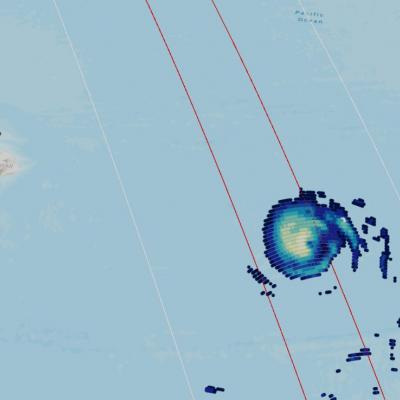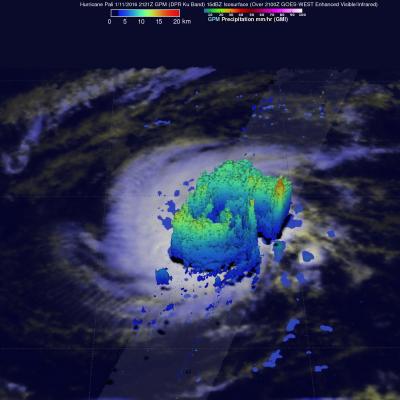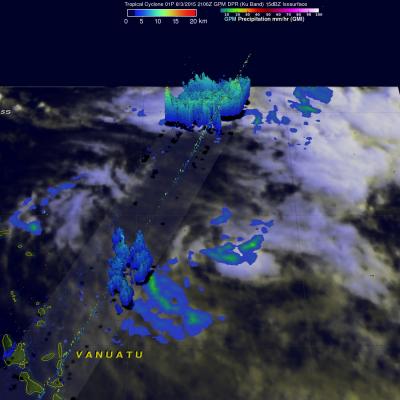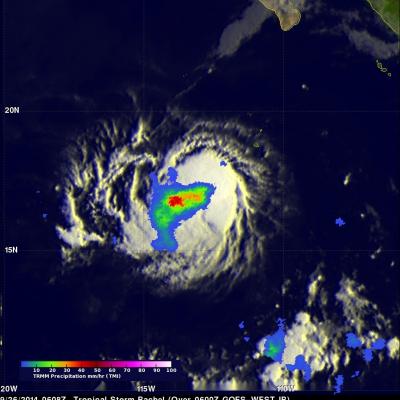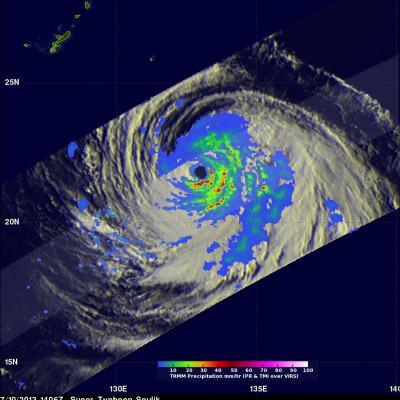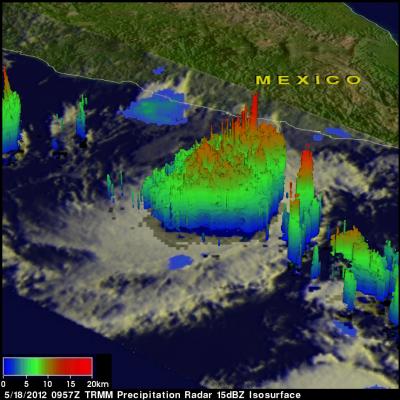GPM Spots Hurricane Pali Forming
Tropical storm Pali intensified late yesterday to become the earliest hurricane ever recorded in the Central Pacific Ocean. Warm ocean waters from El Nino supplied the extra energy needed for Pali to develop and prosper so early in the year. The GPM core observatory satellite flew over Pali on January 11, 2015 at 2121Z. GPM's Dual-Frequency Precipitation Radar (DPR) data sliced through Pali clearly showing that an eye had formed. GPM's DPR measured rain falling at a rate of 84.5 mm (3.3 inches) per hour on the eastern side of Pali's forming eye. GPM's radar (DPR Ku Band) peered through Pali's


